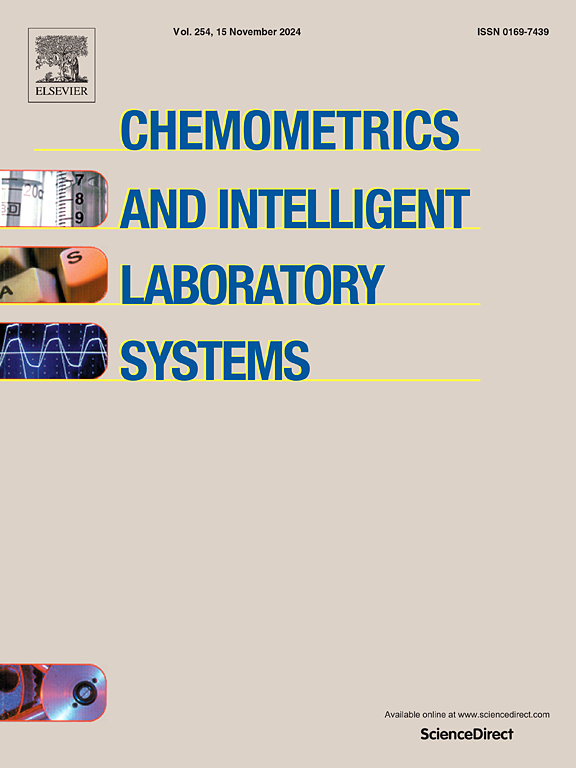通过测量向微分同态的稳定性来评估近红外回归的机器学习模型
IF 3.8
2区 化学
Q2 AUTOMATION & CONTROL SYSTEMS
Chemometrics and Intelligent Laboratory Systems
Pub Date : 2025-06-21
DOI:10.1016/j.chemolab.2025.105449
引用次数: 0
摘要
近红外(NIR)光谱是一种广泛应用于水果品质无损评价的工具,它利用实测光谱,利用合适的回归方法预测干物质和可溶性固形物含量等品质参数。随着深度学习的不断进步,当应用神经网络模型而不是偏最小二乘回归时,有可能提高预测性能,但选择模型仍然具有挑战性,因为性能对模型的架构很敏感。从图像分类工作中获得灵感,我们提出了通过评估微分同构变换的相对稳定性来选择模型的方法,为标准验证方法提供了一种补充方法。这在标记验证数据有限的情况下特别有用。我们在几个近红外回归问题上的实证结果表明,所提出的方法与使用独立验证集相当。除了深度学习架构的选择外,我们还考虑了偏最小二乘回归中组件数量的选择,以证明该方法的通用性。本文章由计算机程序翻译,如有差异,请以英文原文为准。
Assessing machine learning models for near-infrared regression by measuring stability towards diffeomorphisms
Near infrared (NIR) spectroscopy is widely used as a tool for non-destructive assessment of fruit quality by applying measured spectra to predict quality parameters such as dry matter and soluble solids content using a suitable regression method. With continued advancements in deep learning, there is potential for improved predictive performance when neural network models are applied instead of partial least-squares regression, but choosing a model remains challenging as performance is sensitive to the model’s architecture. Taking inspiration from work done in image classification, we propose model selection by assessing relative stability to diffeomorphic transformations, providing a complementary approach to standard validation methods. This is particularly useful when labelled validation data is limited. Our empirical results on several NIR regression problems indicate that the proposed approach is comparable to the use of independent validation sets. In addition to the choice of deep learning architecture, we also consider the selection of the number of components in partial least-squares regression to demonstrate the method’s generality.
求助全文
通过发布文献求助,成功后即可免费获取论文全文。
去求助
来源期刊
CiteScore
7.50
自引率
7.70%
发文量
169
审稿时长
3.4 months
期刊介绍:
Chemometrics and Intelligent Laboratory Systems publishes original research papers, short communications, reviews, tutorials and Original Software Publications reporting on development of novel statistical, mathematical, or computer techniques in Chemistry and related disciplines.
Chemometrics is the chemical discipline that uses mathematical and statistical methods to design or select optimal procedures and experiments, and to provide maximum chemical information by analysing chemical data.
The journal deals with the following topics:
1) Development of new statistical, mathematical and chemometrical methods for Chemistry and related fields (Environmental Chemistry, Biochemistry, Toxicology, System Biology, -Omics, etc.)
2) Novel applications of chemometrics to all branches of Chemistry and related fields (typical domains of interest are: process data analysis, experimental design, data mining, signal processing, supervised modelling, decision making, robust statistics, mixture analysis, multivariate calibration etc.) Routine applications of established chemometrical techniques will not be considered.
3) Development of new software that provides novel tools or truly advances the use of chemometrical methods.
4) Well characterized data sets to test performance for the new methods and software.
The journal complies with International Committee of Medical Journal Editors'' Uniform requirements for manuscripts.

 求助内容:
求助内容: 应助结果提醒方式:
应助结果提醒方式:


